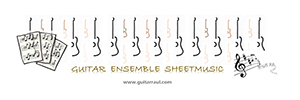Michael Gale
https://eprints.soton.ac.uk/366434
This study explores the popularity of lute instruction in late sixteenth- and early seventeenth-century England and the ways in which this accomplishment was used in constructions of social status. The opening chapter outlines the functions of the lute in early modern English culture and surveys previous research on the instrument and its repertory. Chapter 2 provides an overview of the hierarchical structure of Elizabethan society, highlighting shifting conceptions of “gentle” status during the sixteenth century. The complex position of music within early modern discourses on elite identity is discussed, alongside the potential of lute-playing skills to contribute towards social advancement.
Four case studies follow, each exploring the uses of lute-playing amongst practitioners located on the hazily defined boundaries between “gentle” and lower-class status. Chapter 3 uses the autobiography of Thomas Whythorne as a focal point in order to examine the ambiguous role of musicians in household service. By teaching coveted “courtly” skills to their social superiors, these music tutors were in an advantageous position to secure further rewards and enhance their status. Chapter 4 reassesses the Mynshall lutebook, highlighting the roles of music-making and literary production amongst a circle of mercantile-class men in provincial England. It reveals how lute-playing and poetic exchange facilitated social interaction and consolidated kinship bonds within this group as they sought to forge a collective identity grounded in the cultural practices of more elite circles.
The role of recreational music-making amongst university men is examined in Chapter 5 through a reappraisal of the Dallis lutebook, showing how playing and collecting lute music could form a strand in the fashioning of a distinctively learned “scholarly” identity. My final case study assesses the printed tutor books marketed from the 1560s onwards, paying close attention to the material forms of extant copies (as evidence of their usage) and their paratextual materials. A close reading of Thomas Robinson’s Schoole of Musicke (1603) reveals how this publication was designed to appeal simultaneously to two very different markets: aspirant middle-class autodidacts, and wealthier “gentleman” readers who could provide further patronage and career advancement to the author.
Gale, Michael (2014) Learning the lute in early modern England, c.1550 – c.1640University of Southampton, Faculty of Humanities, Doctoral Thesis, 285pp.





